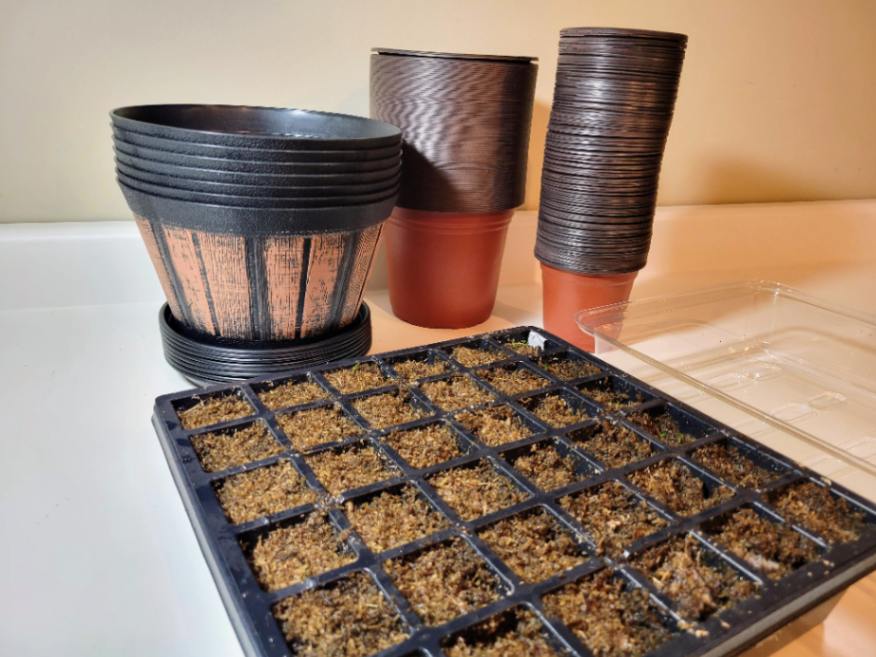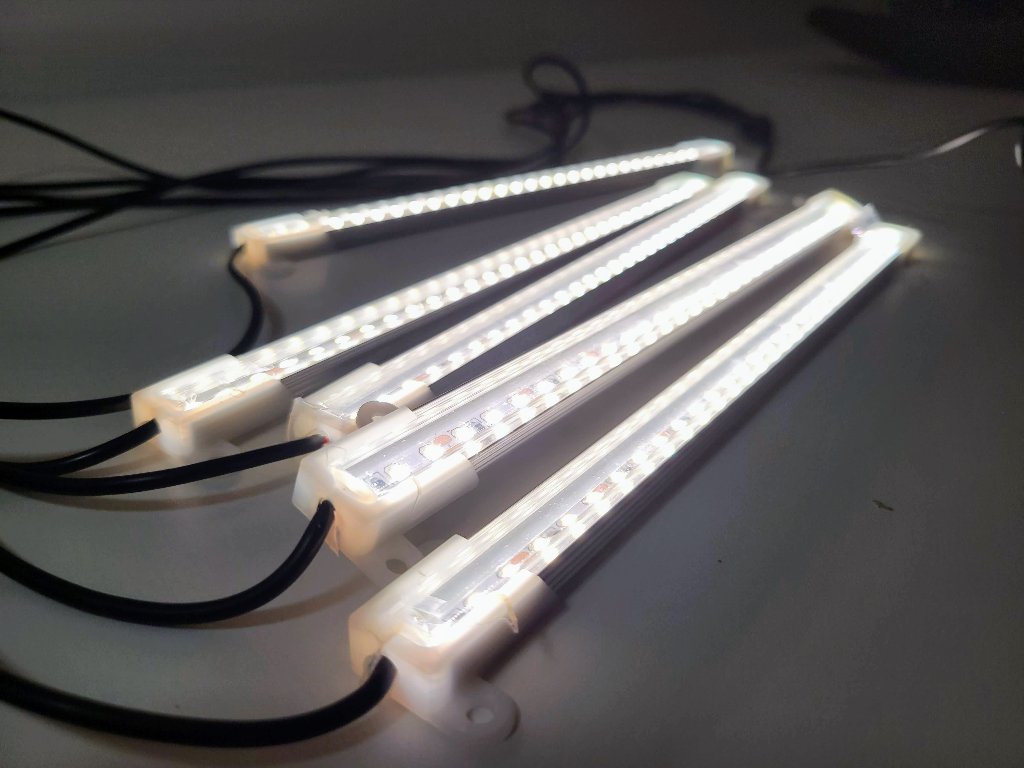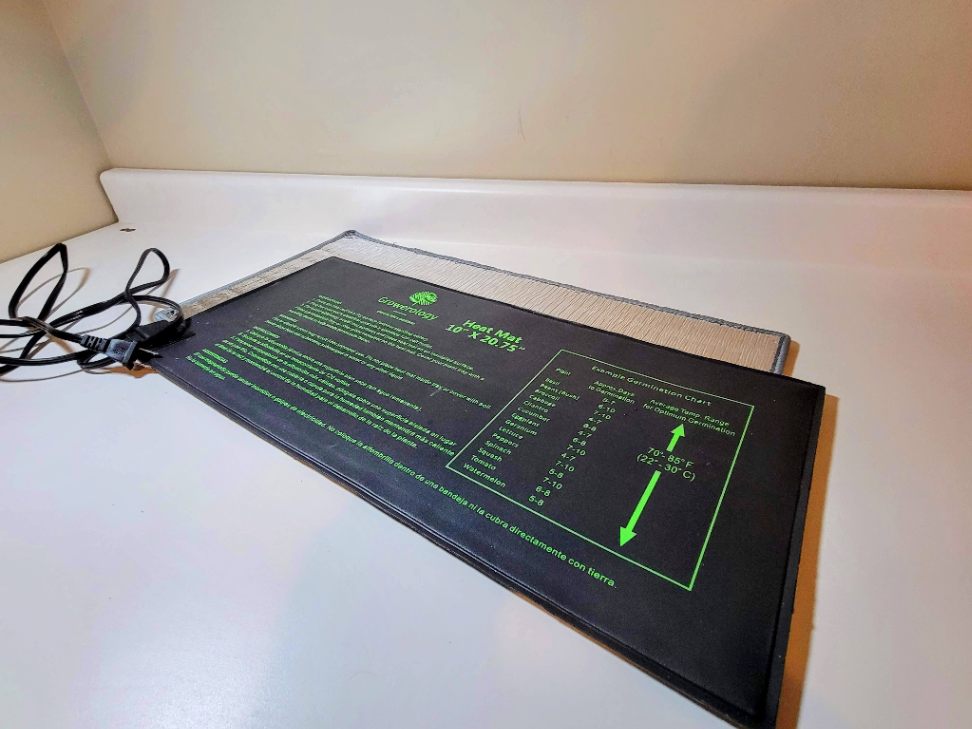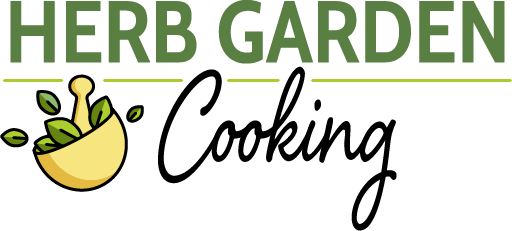This post may contain affiliate links which means I may receive a commission for purchases made through links. I only recommend products that I have personally used. As an Amazon Associate I earn from qualifying purchases. Learn more on my Private Policy page.
When it comes to growing herbs from seeds, success begins first and foremost with purchasing quality seeds from reputable seed suppliers. But what else do you need to start your herb seeds indoors?
To start herb seeds, you’ll need to gather seed starting trays, pots, starter mix, growing lights, and heating mats. These supplies create a controlled environment for successful germination and growth. Consider extras like watering cans, digital thermometers, and timers for meticulous care.
Let’s take a closer look at the supplies you’ll need to begin cultivating herbs from seeds indoors.
Table of Contents
Herb Seeds
When growing herbs from seeds, the quality of your seeds is crucial. Make sure to purchase high-quality seeds from reputable seed suppliers. This will ensure you’re getting good germination rates and that your herb plants will have a healthy start.

I’ve been buying most of my herb seeds from SeedsNow. Their seeds are 100% non-genetically modified and are open-pollinated. They assure their customers that their seeds have high germination percentages, and this has proven to be the case based on my experience.
With a focus on preserving natural purity, their open-pollinated seeds allow for safe seed-saving and replanting after harvest, making them an excellent choice for environmentally conscious gardeners. They offer a few hybrid varieties which are labeled as such, but most of their seeds are heirloom
Understanding Seed Types: Heirloom, Hybrid & Organic
- Heirloom Seeds: Heirloom herb seeds are ancient plant varieties passed down through generations and are known for their genetic diversity and historical value. They consistently yield offspring that are similar to the parent plant.
- Hybrid Seeds: Hybrid seeds are the results of controlled cross-breeding between two plant varieties or species to create offspring with specific desirable traits. This makes hybrid seeds valuable in commercial agriculture. Unlike heirloom seeds, herbs grown from hybrid seeds don’t reliably pass on traits to their offspring and are not typically used for seed-saving.
- Organic Seeds: Organic seeds come from plants grown without synthetic pesticides, herbicides, or GMOs. They follow organic farming practices emphasizing soil health, biodiversity, and sustainability. Planting organic seeds leads to chemical-free produce and supports eco-friendly gardening.

Choosing the Right Herbs to Grow from Seed
Many common culinary herbs are fairly easy to start from seed. Herbs such as basil, cilantro, dill, and thyme are all known for their speedy germination, making them an excellent choice for home gardeners.
For more information on which herbs are easy to grow from seed (and which herbs are not), see my article on how to grow herbs from seeds.
Seed Starting Trays and Pots
To grow herbs from seed, you’ll need a variety of growing containers such as seed starting trays and various sizes of pots to transplant your seedlings into once they start to become more established.

Stay Organized with Seed Starting Trays
Seed starting trays provide a tidy and organized way for simultaneously starting multiple herb varieties from seed. Individual cells can be dedicated to a specific type of herb, which helps you keep track of what you’re growing.
Seed starter trays help create a controlled environment by maintaining more consistent moisture and temperature for your seeds, accelerating germination, and enhancing success rates.
Thanks to the protective individual cells, transplanting herb seedlings from seed-starting trays is straightforward. These cells allow you to lift each seedling gently from its designated compartment, helping to safeguard the delicate herb roots.
Types of Seed Starting Trays
Seed starting trays come in different shapes, sizes, and materials. To ensure you get the perfect fit for your gardening endeavors, it’s essential to familiarize yourself with these differences before making your selection.

There are two primary types of seed starting trays:
- Plastic Seed Starter Trays: These are the most common and affordable seed starting trays and are good for starting a wide range of herbs. They often come with humidity domes to help control moisture and temperature
- Biodegradable Seed Starter Trays: Biodegradable seed starter trays can be planted directly into the soil, which helps to reduce transplant show for herbs with sensitive roots. They are typically made of materials like coconut coir or peat.
| Plastic Seed Starter Trays | Biodegradable Seed Starter Trays | |
|---|---|---|
| Sturdiness | Generally sturdy and durable | Less sturdy, can degrade over time |
| Transplanting Ease | Seedlings may experience transplant shock when removed due to plastic’s rigidity | Less risk of root damage, as trays can be planted directly into the soil |
| Root Health | Plastic trays can sometimes restrict root growth and airflow | Biodegradable trays allow better air and moisture circulation for healthier roots |
| Sustainability | Typically not biodegradable and contribute to plastic waste | Environmentally friendly, as they break down naturally |
| Humidity Domes | Widely available with plastic trays | Availability is limited, but can still be used with biodegradable trays |
Here are some links to good options for both types of seed starter trays:
- Plastic Seed Starter Trays with Humidity Dome (Amazon)
- Pack Peat Pots Seed Starter Trays – Organic Biodegradable (Amazon)
Pots and Containers for Growing Herbs Indoors
Once your herbs have moved beyond the seedling stage, you’ll need to transplant them into larger pots.

You’ll need to transplant your herbs into larger containers at least once, but more likely twice or even three times.
I typically have 3 different sizes of pots for transplanting herbs, including 4″, 6″ and 8″ pots. Pots should be big enough to accommodate the root system. 6-8″ pots are generally sufficient for herbs, although herbs like rosemary or mint may require larger containers.
Ensure your pots have drainage holes, as herbs don’t like to sit in water as it can cause root rot. Also, place plant saucers underneath your pots to capture any water overflow to ensure you’re not making a mess when watering.
Here are some links to some potting options for growing herbs indoors:
- Growneer 4 Inch Plastic Plant Nursery Pots (Amazon)
- Growneer 6 Inch Platic Plant Nursery Pots (Amazon)
- 8 inch Whiskey Barrel Planters & Saucers (Amazon)
- Plant Saucers – Multiple Sizes (Amazon)
Seed Starter and Potting Mix
It’s important to use a seed-starting mix to help the tiny herb seeds germinate when starting herbs from seeds. Seed starting mix is lighter and airier than potting soil and helps to provide the best environment for seed germination.
I generally use a dried seed starter like Mosser Lee SucSeed Seed Starter (Amazon). For these types of seed starters, you mix equal parts of the seed starter mix with water right before planting.

When you’re ready to transplant your herbs to larger containers, you’ll want to switch to a potting mix. I prefer peat-free potting mixes such as Back to the Roots All-Purpose Potting Mix (Amazon), as they are a more sustainable option than peat-based potting mixes.
For drought-tolerant herbs such as rosemary, thyme, and sage, you may also consider mixing in a cactus potting mix such as Espoma Organic Cactus Potting Soil Mix (Amazon) for improved drainage. I use one part cactus mix to two parts potting soil for these types of herbs.
For more information about the best types of growing mediums for indoor herbs, check out my article on What is the Best Soil for Indoor Herbs.
Growing Lights
Using indoor growing lights when growing herbs from seed indoors is necessary for a few key reasons:
- Limited Natural Light: Indoor spaces often lack the sunlight that herbs need for proper germination and growth, especially in the winter.
- Consistent Light Quality: Growing lights offer stable and consistent light, ensuring steady growth throughout the year.

Benefits of Using Growing Lights for Indoor Herbs
Using growing lights when cultivating herbs indoors offers many key benefits, including:
- Sufficient Light for Seed Germination: Newly planted herb seeds require a minimum of 12 hours of light for germination, and 14-16 hours is even better. Indoors, achieving this without growing lights can be challenging.
- Promotes Healthy Growth: Growing lights provide the ideal light spectrum for growing strong herbs.
- Extends Growing Season: Indoor growing lights allow year-round herb cultivation, independent of weather or season.
- Consistent Light Exposure: Growing lights ensure uniform light distribution, which prevents uneven growth.
Types of Growing Lights
There are a variety of lighting options available for growing herbs from seeds indoors.
- Fluorescent Lights: Fluorescent lights are a budget-friendly and energy-efficient choice for indoor herb gardening. T5 tubes are favored for their higher energy efficiency and light intensity. They are well-suited for seedlings and younger plants due to their limited light spectrum, making fluorescent lights an excellent option for beginners looking for affordability and simplicity.
- LED Lights: LED (Light Emitting Diode) lights are favored in indoor gardening for versatility, efficiency, and customizability. With various spectrum choices available, including full-spectrum choices, they suit all herb growth stages. LEDs are highly energy-efficient and long-lasting, which compensates for their initial cost over time.
- High-Intensity Discharge (HID) Lights: HID lights include MH (metal halide) and HPS (high-pressure sodium) bulbs, and are known for their intense brightness. MH is for vegetative growth, and HPS suits flowering and fruiting. Despite their benefits, HID lights have drawbacks, including high costs, heat generation (often requiring cooling), and higher energy use than LEDs. They’re better for larger gardens and less suitable for seedlings.
| Fluorescent Lights | LED Lights | HID Lights | |
|---|---|---|---|
| Energy Efficiency | Moderate | High | Moderate to High |
| Initial Cost | Low | Moderate to High | High |
| Lifespan | 10,000 – 20,000 hours | 25,000 – 50,000 hours | 10,000 – 20,000 hours |
| Heat Emission | Low | Low | High (Requires Cooling) |
| Light Spectrum | Limited Spectrum | Customizable | Full Spectrum |
| Light Intensity | Lower | Moderate to High | Very High |
| Size | Bulky Fixtures | Sleek and Compact | Bulky Fixtures or Bulbs |
| Adjustability | Limited | Highly Adjustable | Moderate to High |
I personally use a combination of fluorescent lights for seedlings and LED lights for later growing stages, although I will probably begin shifting to using LED growing lights for all my indoor growing needs in the coming seasons.
Here are some links to some great LED indoor growing lamp options:
- Full spectrum LED Grow Lights for Indoor Plants (3-Head) (Amazon)
- Barino LED Grow Light Bulbs for Indoor Plants (8-Pack) (Amazon)
Seedling Heating Mats
Seedling heat mats are essential for herb seed starting. They deliver consistent warmth to your seed trays and help create ideal germination conditions while lowering the risk of damping-off diseases and fungi.

Seed heating mats are flexible mats with built-in heating elements designed to warm the soil or seed trays where you’re germinating seeds. They help to evenly distribute the heat and promote germination.
Seed heating mats typically operate within a temperature range of 70°F to 85°F (21°C to 29°C) which is ideal for most herbs. This controlled warmth accelerates the germination process.
Seeds require the right temperature to activate enzymes that kickstart growth, and seed heating pads provide the necessary warmth for this process, which enhances germination rates.
Here are some link to some good seed heating mats to get you started:
- VIVOSUN Waterproof Seedling Heat Mat 10″ x 20.75″ (Amazon)
- BN-LINK Durable Seedling Heat Mat Heating Pad 10″ x 20.75″ with Digital Thermostat Controller (Amazon)
Other Seed Starting Supplies
Watering Cans
Watering cans are helpful for watering in hard-to-reach areas. Here’s a link to the Indoor Plant Watering Can (Amazon) I use for my own indoor herb garden.

Thermometers
I like to use digital thermometers to keep track of minimum and maximum temperatures in the areas where I’m growing herbs indoors. This helps me to determine if my seeds or herb plants are in a place that is too hot or too cold in case I need to move them to a different location. I use these digital refrigerator thermometers (Amazon) for this purpose
Grow Light Timers
I like to set my growing lights on timers so my plants and seedlings are getting consistent light every day. There are a variety of outlet timers available that you can use for this purpose.
If you’re a geek like me and are into smart devices that can be used with the like of Alex or Google Assistant, the following smart plugs can be integrated into your smart things environment and set up on schedules:
- BN-LINK WiFi Heavy Duty Smart Plug Outlet (Amazon)
- Govee Smart Plug, WiFi Plugs Work with Alexa & Google Assistant (Amazon)
Mechanical timers like this one also work perfectly for setting your growing lights on a schedule:
Miscellaneous Supplies
Other types of supplies you may need for starting herbs seeds indoors include things like:
- Spray bottles for misting
- Plastic Wrap for covering seeds while they germinate if you’re not using domes
- Labels and Markers for labeling the seeds you’ve planted
- Notebooks and Pencils/Pens for taking detailed notes and keeping organized while you plant your seedlings
Conclusion
The process of nurturing herb seeds into thriving plants is both an art and a science. By purchasing high-quality seeds, selecting the right containers, and providing optimal conditions with seed starting trays and heating mats, you set the stage for successful germination and growth.
Using growing lights tailored to your herbs’ specific needs and selecting an appropriate seed starter mix are also critical in making sure your herbs are off to a good start. With these supplies in hand, you’ll be well-prepared to create a thriving indoor herb garden, bringing fresh flavors and aromas to your cooking adventures.
Last Updated on 27 April 2024 by Bob Lee

